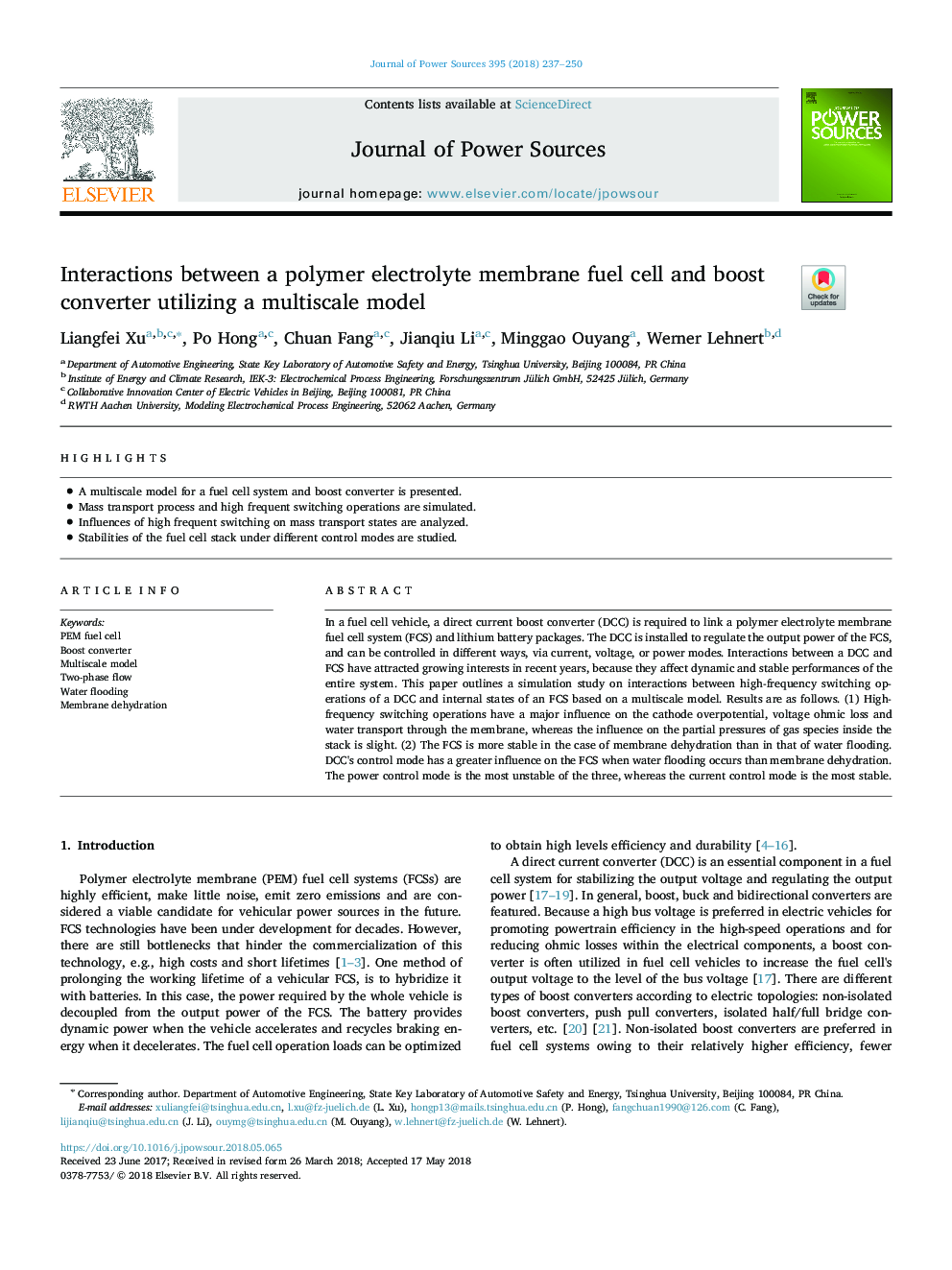| Article ID | Journal | Published Year | Pages | File Type |
|---|---|---|---|---|
| 7724903 | Journal of Power Sources | 2018 | 14 Pages |
Abstract
In a fuel cell vehicle, a direct current boost converter (DCC) is required to link a polymer electrolyte membrane fuel cell system (FCS) and lithium battery packages. The DCC is installed to regulate the output power of the FCS, and can be controlled in different ways, via current, voltage, or power modes. Interactions between a DCC and FCS have attracted growing interests in recent years, because they affect dynamic and stable performances of the entire system. This paper outlines a simulation study on interactions between high-frequency switching operations of a DCC and internal states of an FCS based on a multiscale model. Results are as follows. (1) High-frequency switching operations have a major influence on the cathode overpotential, voltage ohmic loss and water transport through the membrane, whereas the influence on the partial pressures of gas species inside the stack is slight. (2) The FCS is more stable in the case of membrane dehydration than in that of water flooding. DCC's control mode has a greater influence on the FCS when water flooding occurs than membrane dehydration. The power control mode is the most unstable of the three, whereas the current control mode is the most stable.
Keywords
Related Topics
Physical Sciences and Engineering
Chemistry
Electrochemistry
Authors
Liangfei Xu, Po Hong, Chuan Fang, Jianqiu Li, Minggao Ouyang, Werner Lehnert,
